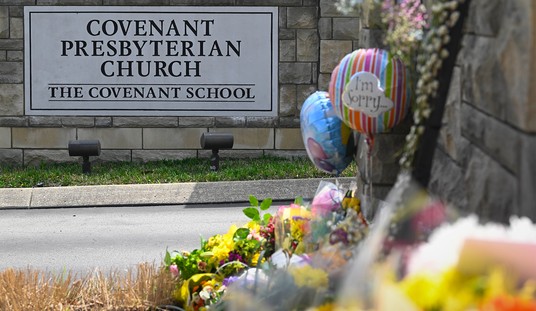After months of closed-door meetings and shadowy scheming on the part of a handful of Massachusetts lawmakers, Rep. Michael Day unveiled his revised anti-gun omnibus bill on Thursday morning. While the legislation now has a new bill number, most of the problematic portions of HD 4420 are still included, according to the Gun Owners Action League.
The "revised" anti-rights bill from Michael Day has been released. It will take some time for us to get through it but it appears to be a slightly shorter version of the same attack on our rights as before, just with a different number.https://t.co/Npwkf04Lja pic.twitter.com/LMr3Wo7SId
— GOAL (@GOALupdate) October 5, 2023
GOAL is right that it’s going to take some time to wade through the particulars of the newest version of the “Lawful Citizens Imprisonment Act.” Unless you’re already familiar with the most intricate details of Massachusetts gun law, it’s difficult to determine at a quick glance all of the changes that HD 4607 would impose on gun owners. It will take hours, if not days, to pore over the text of HD 4607 to see exactly what’s in it, but when I took a cursory look at the bill I noticed a few issues that immediately stood out.
Day’s bill appears to offer new restrictions on who can possess and carry a firearm in the state that go far beyond current federal law, as well as new restrictions on the type of guns that can be sold in the state. In fact, if I’m reading this section of HD 4607 accurately, the bill imposes a ban on all guns sold without “safety devices”; a move that could open the door to only so-called smart guns being offered for sale.
Any firearm sold within the commonwealth without a safety device designed to prevent the discharge of such firearm by unauthorized users and approved by the colonel of state police including, but not limited to, mechanical locks or devices designed to recognize and authorize, or otherwise allow the firearm to be discharged only by its owner or authorized user, by solenoid use-limitation devices, key activated or combination trigger or handle locks, radio frequency tags, automated fingerprint identification systems or any other biometric means, provided, that such device is commercially available, shall be defective and the sale of such a firearm shall constitute a breach of warranty under section 2–314 of chapter 106 and an unfair or deceptive trade act or practice under section 2 of chapter 93A.
The legislation leaves it up to the state police to determine what’s acceptable, so a trigger or cable lock might suffice. On the other hand, the colonel in charges of making that determination could also conclude that only “smart gun” technology is capable of preventing the discharge of a firearm by unauthorized users, rendering all traditional firearms banned under state law without the legislature instituting a ban directly.
Another sign that Day and his anti-gun allies are gunning for a ban on traditional firearms is the creation of a “special legislative commission” tasked with investigating “the status, feasibility, and utility of emerging firearm technologies, including but not limited to personalized firearm technology and microstamp technology.”
The study shall include: (i) a review of existing and developing personalized firearm and microstamp technologies; (ii) an investigation of the accuracy, effectiveness and utility of personalized firearm and microstamp technologies; (iii) an evaluation of the commercial availability of personalized firearm and microstamp technologies, both in the production of new firearms and modification of existing firearms; (iv) an investigation of the cost and impacts associated with requiring the use of personalized firearm or microstamp technologies in the commonwealth; and (vi) evaluation of the feasibility and utility of a personalized firearm technology tax incentive program.
Surprisingly, Day’s revised bill doesn’t include an extensive list of newly prohibited places where lawful carry is banned, at least outright. The devil is always in the details, but at first glance the legislation does differ in one critical respect from what we’ve seen in states like California, New York, New Jersey, and Maryland, where lawmakers have sought to ban concealed carry from all private property by default unless signs are posted declaring otherwise.
(i) a place owned, leased, or under the control of state, county or municipal government and used for the purpose of government administration, judicial or court administrative proceedings, or correctional services, including in or upon any part of the buildings, grounds, or parking areas thereof;
(ii) a location in use at the time of possession as a polling place or for the storage or tabulation of ballots ;
(iii) an elementary school, secondary school, college or university including transport used for students of said institution, including in or upon any part of the buildings, grounds, or parking areas thereof; and
(iv) any private, residential dwelling of another, not held open to the public, unless the person in possession of the firearm (A) has a valid firearms license or permit issued under section 124 to 125B, inclusive, of chapter 140 and (B) has been given express authorization to carry a firearm in said dwelling by the property owner or lessee, or an agent thereof; provided, that express authorization shall be signified by unambiguous written or verbal authorization or by the posting of clear and conspicuous signage on the building or the premises by the property owner or lessee, or an agent thereof, indicating that possession of a firearm is authorized.
We’ll give the good folks at GOAL a couple of days to cross-reference existing statutes and decipher the legalese in Day’s new legislation, but I’ll be welcoming Jim Wallace back to Cam & Co for an in-depth look at the dangers in Day’s bill next week. In the meantime, I encourage you to take a look at the text of HD 4607 for yourself, though I’ll warn you in advance that it’s probably going to be a frustrating exercise to figure out exactly what’s changing.









Join the conversation as a VIP Member